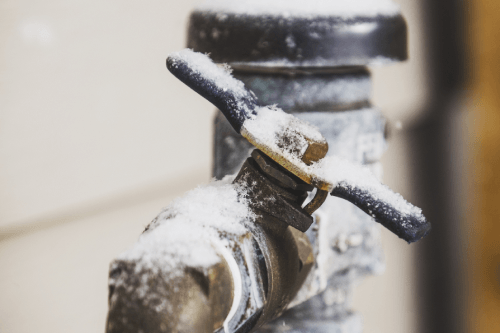Protecting Pipes from Cold Weather: Top Tips
Protecting Pipes from Cold Weather: Top Tips
Blog Article
What're your opinions on Helpful Tips to Prevent Frozen Pipes this Winter?

Winter can wreak havoc on your pipes, especially by freezing pipelines. Here's exactly how to prevent it from happening and what to do if it does.
Introduction
As temperature levels decline, the danger of icy pipes boosts, potentially resulting in costly repair services and water damage. Comprehending how to avoid icy pipes is important for property owners in cold climates.
Avoidance Tips
Shielding at risk pipelines
Wrap pipes in insulation sleeves or utilize warmth tape to safeguard them from freezing temperature levels. Concentrate on pipes in unheated or external areas of the home.
Heating strategies
Keep indoor spaces adequately warmed, particularly locations with plumbing. Open closet doors to enable cozy air to circulate around pipes under sinks.
Just how to recognize frozen pipes
Search for reduced water flow from faucets, unusual smells or noises from pipelines, and noticeable frost on subjected pipelines.
Long-Term Solutions
Architectural modifications
Take into consideration rerouting pipes far from exterior wall surfaces or unheated locations. Include added insulation to attic rooms, cellars, and crawl spaces.
Upgrading insulation
Buy high-quality insulation for pipelines, attics, and wall surfaces. Appropriate insulation helps maintain consistent temperatures and reduces the risk of frozen pipelines.
Safeguarding Exterior Plumbing
Yard hoses and outside faucets
Separate and drain garden hoses before winter. Mount frost-proof faucets or cover outside faucets with protected caps.
Understanding Icy Pipes
What creates pipelines to ice up?
Pipes ice up when subjected to temperature levels listed below 32 ° F (0 ° C) for prolonged durations. As water inside the pipelines freezes, it increases, taxing the pipeline wall surfaces and potentially causing them to rupture.
Threats and problems
Icy pipes can cause water system disruptions, property damages, and pricey repairs. Burst pipelines can flood homes and trigger considerable structural damage.
Signs of Frozen Water Lines
Determining frozen pipelines early can stop them from rupturing.
What to Do If Your Pipes Freeze
Immediate activities to take
If you think frozen pipelines, keep taps open to eliminate pressure as the ice thaws. Make use of a hairdryer or towels taken in warm water to thaw pipelines gradually.
Verdict
Avoiding frozen pipes calls for proactive actions and quick responses. By understanding the causes, signs, and preventive measures, house owners can protect their pipes throughout cold weather.
5 Ways to Prevent Frozen Pipes
Drain Outdoor Faucets and Disconnect Hoses
First, close the shut-off valve that controls the flow of water in the pipe to your outdoor faucet. Then, head outside to disconnect and drain your hose and open the outdoor faucet to allow the water to completely drain out of the line. Turn off the faucet when done. Finally, head back to the shut-off valve and drain the remaining water inside the pipe into a bucket or container. Additionally, if you have a home irrigation system, you should consider hiring an expert to clear the system of water each year.
Insulate Pipes
One of the best and most cost-effective methods for preventing frozen water pipes is to wrap your pipes with insulation. This is especially important for areas in your home that aren’t exposed to heat, such as an attic. We suggest using foam sleeves, which can typically be found at your local hardware store.
Keep Heat Running at 65
Your pipes are located inside your walls, and the temperature there is much colder than the rest of the house. To prevent your pipes from freezing, The Insurance Information Institute suggests that you keep your home heated to at least 65 degrees, even when traveling. You may want to invest in smart devices that can keep an eye on the temperature in your home while you’re away.
Leave Water Dripping
Moving water — even a small trickle — can prevent ice from forming inside your pipes. When freezing temps are imminent, start a drip of water from all faucets that serve exposed pipes. Leaving a few faucets running will also help relieve pressure inside the pipes and help prevent a rupture if the water inside freezes.
Open Cupboard Doors
Warm your kitchen and bathroom pipes by opening cupboards and vanities. You should also leave your interior doors ajar to help warm air circulate evenly throughout your home.
:strip_icc()/snow-outdoor-faucet-pipes-4af65d1e5e904fb1aa7bf74071fe5d89.jpg)
Do you enjoy reading about Prevent Frozen Pipes ? Leave a remark below. We will be delighted to listen to your insights about this blog post. Hoping that you come back again later on. Sharing is nice. You won't know, you may just be doing someone a favor. Kudos for being here. Please come visit our website back soon.
This Resource Report this page